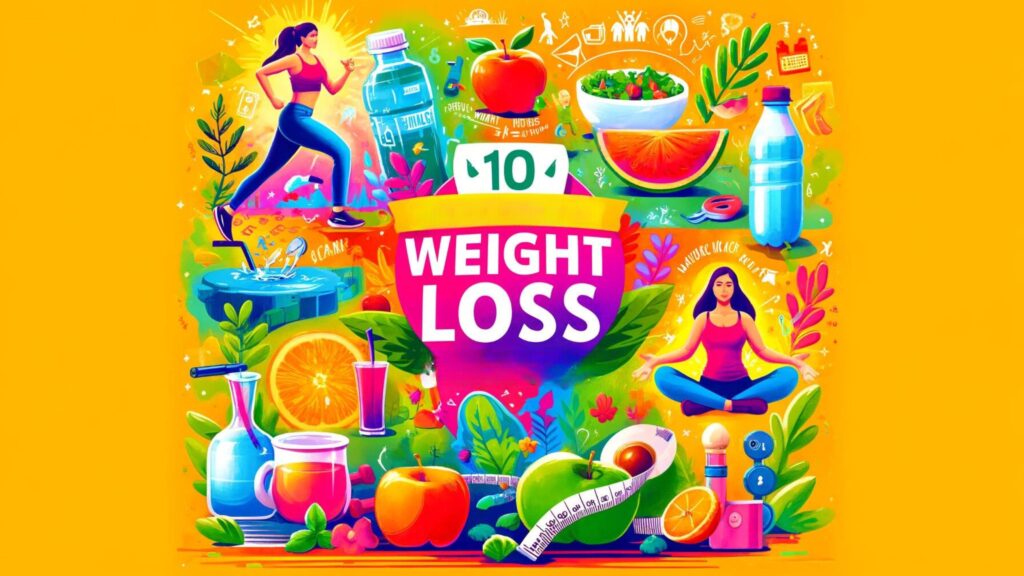When starting a weight-loss journey, many people look for reliable and effective strategies to help them achieve a healthier and slimmer body. This guide delves into the fundamental principles of weight loss, combining scientific knowledge with practical, effective recommendations. Whether you are a beginner dieter or an experienced fitness enthusiast, our guide will provide you with advanced weight-loss strategies. Prepare to transform your weight-loss strategy by learning about metabolic dynamics and adopting long-term eating habits. Join us as we explore the secrets to becoming a leaner, more energetic version of yourself.
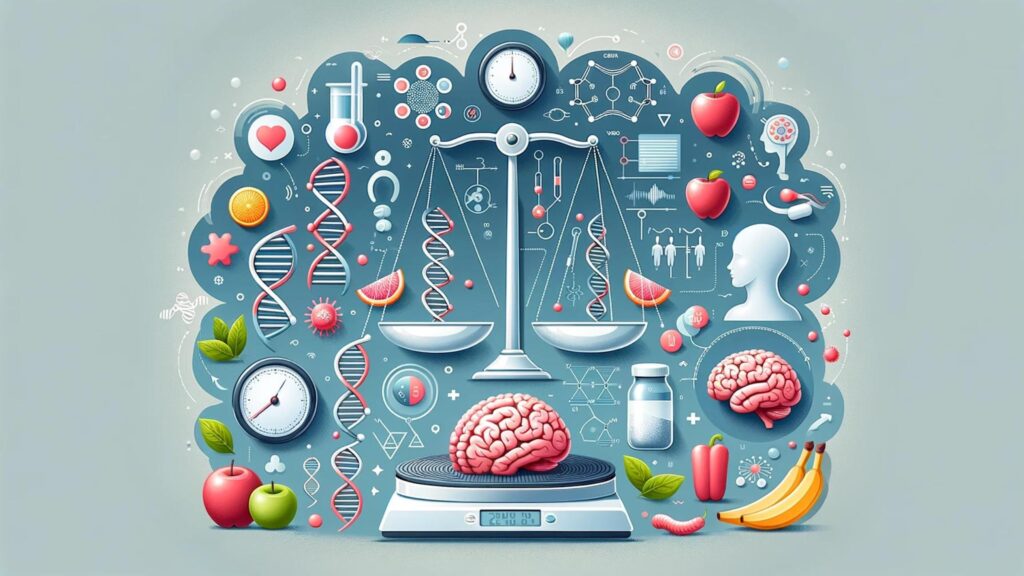
- Understanding weight loss fundamentals
- The Science of Weight Loss: Understanding How Your Body Burns Fat.
- Weight Loss Psychology: Motivating You to Begin
- Metabolic myths and weight-loss facts:
- The Influence of Genetics on Success in Losing Weight
- How Hormones Influence Your Weight Loss Journey
- Weight Loss and Fat Loss: What You Should Know
- Calculate your ideal weight-loss target
- Key Components of a Successful Weight Loss Plan
- Dietary Strategies for Weight Loss
- Creating a Weight-Loss-Friendly Kitchen
- The truth about carbohydrates and weight loss
- Protein's Role in Weight Loss Acceleration
- Fats: The Good, the Bad, and Weight Loss
- Weight Loss Superfoods for Your Diet
- How Sugar Affects Weight Loss
- Meal Planning Strategies for Effective Weight Loss
- Snacking for Weight Loss: Healthier Options
- Weight-Loss Workout Plans
- Designing a Weight Loss-Focused Exercise Routine
- Cardio for Weight Loss: Best Practices
- Strength training to increase weight loss
- Integrating flexibility training into your weight-loss routine
- High-intensity interval training for quick weight loss
- Yoga Poses for Weight Loss
- Tracking Fitness Progress for Weight Loss Goals
- Overcoming Exercise Plateaus and Weight Loss
- Advanced Weight Loss Techniques
- Intermittent Fasting for Weight Loss: A Deep Dive
- A Synergistic Relationship between a Ketogenic Diet and Weight Loss
- Do detox and cleansing help with weight loss?
- "The Science of Thermogenic Foods and Weight Loss"
- Use weight-loss supplements safely.
- Exploring Prescription Medication for Weight Loss
- Bariatric Surgery: When Weight Loss Seems Impossible
- The role of probiotics in weight loss
- Changes in behavior and lifestyle are crucial for weight loss
- How Sleep Affects Weight Loss
- Stress management techniques for weight loss
- Weight loss and relationship dynamics
- Setting realistic weight-loss goals
- Maintaining Motivation During Your Weight Loss Journey
- The significance of mindfulness in weight loss is crucial.
- Creating a Weight-Loss Support System
- Rewarding Yourself Without Undermining Weight Loss
- Overcoming weight loss challenges
- Identifying and Overcoming Weight Loss Plateaus
- Managing Weight Loss Setbacks and Relapses
- Dealing with Unsolicited Weight Loss Advice
- Managing weight loss in social settings
- Weight loss due to certain health conditions
- Weight loss strategies for busy people
- Age-Related Weight Loss Tips
- Weight Loss Maintenance: Keeping the Weight Off
- The ultimate weight loss guide: secrets for a slimmer you!
- FAQs: The Ultimate Weight Loss Guide: Secrets for a Slimmer You!
- 1. What is the best way to start losing weight?
- 2. What number of calories should I consume to lose weight?
- 3. Can I lose weight without exercising?
- 4. Which exercises are best for weight loss?
- 5. How can I stay motivated on my weight-loss journey?
- 6. What do I do if I reach a weight-loss plateau?
- 7. Is it necessary to count calories?
- Conclusion
Understanding weight loss fundamentals
The Science of Weight Loss: Understanding How Your Body Burns Fat.
Understanding weight loss necessitates a knowledge of the biological processes involved in fat metabolism. When you eat less and exercise more, your body seeks energy from stored fat. Enzymes break down fat into glycerol and free fatty acids, then metabolize them for energy, a process known scientifically as lipolysis. Understanding this process emphasizes the importance of striking a balance between diet and physical activity for successful weight management.
Weight Loss Psychology: Motivating You to Begin
Starting a weight-loss journey requires both a physical and mental commitment. Fantasies about the positive life changes that will follow frequently spark strong motivation at the beginning of this path. Making a vision board or keeping a journal can serve as constant reminders of your goals, keeping you motivated throughout the arduous process of losing weight.
Metabolic myths and weight-loss facts:
Several myths cloud our understanding of metabolism’s role in weight loss. Contrary to popular belief, there is no magical food or pill that instantly increases metabolism to aid in fat loss. A variety of factors influence metabolism, including age, gender, and muscle mass. Recognizing these facts can help you avoid wasting time and focus your efforts on scientifically proven weight-management methods.
The Influence of Genetics on Success in Losing Weight
Genetics plays an important role in determining body size and shape, as well as how you digest food. However, this does not determine one’s fate in weight management. Recognizing genetic predispositions allows individuals to tailor their fitness strategies to work in tandem with their natural tendencies, maximizing weight loss effectiveness.
How Hormones Influence Your Weight Loss Journey
Hormones have a significant impact on weight management. For example, insulin regulates blood sugar levels and influences fat storage. Other hormones, including cortisol and thyroid hormones, play important roles. Understanding these can lead to a more structured diet and exercise plan that accounts for hormonal fluctuations, resulting in better weight management.
Weight Loss and Fat Loss: What You Should Know
It is critical to distinguish between weight loss and fat loss. Weight loss can include water, fat, and muscle, whereas fat loss focuses on reducing fat mass while retaining muscle. Prioritizing fat loss through strength training and proper nutrition can result in more sustainable and healthier body composition changes.
Calculate your ideal weight-loss target
Determining your ideal weight loss goal entails more than just aiming for a specific number on the scale; it also necessitates a realistic assessment of body composition and personal health objectives. Using tools like BMI calculators or body fat percentage assessments gives you a better understanding of what you need to do for optimal health.
Key Components of a Successful Weight Loss Plan
A successful weight loss plan combines balanced nutrition, regular physical activity, adequate sleep, and stress management. To ensure not only temporary weight loss but a lifelong commitment to good health, it is crucial to tailor each element to the individual’s lifestyle and needs.
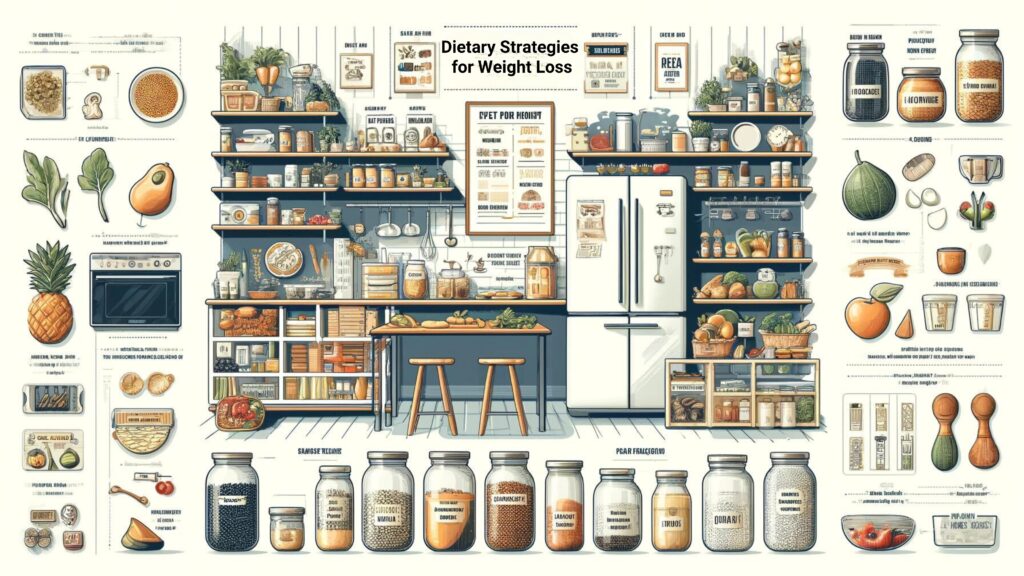
Dietary Strategies for Weight Loss
Creating a Weight-Loss-Friendly Kitchen
Purge your kitchen of high-calorie, low-nutrient foods and stock it with healthy ingredients to make it a weight-loss beacon. Start with clear countertops to avoid visual temptations. Stock your pantry with whole grains, lean proteins, and lots of fresh produce. By making healthy foods more accessible, you set the stage for positive eating habits that promote weight loss while maintaining satisfaction.
The truth about carbohydrates and weight loss
Despite their frequent vilification in the weight-loss debate, carbohydrates are essential for a healthy diet. The key is to choose the right types—complex carbs such as vegetables, whole grains, and legumes provide long-term energy and fiber. These options help keep blood sugar levels stable and prevent the rapid spikes and crashes that cause increased hunger and overeating.
Protein’s Role in Weight Loss Acceleration
Incorporating more protein into your diet can significantly accelerate weight loss. Protein helps to build lean muscle mass, which boosts metabolism and increases calorie burn. Furthermore, protein has a higher thermic effect, which means your body expends more energy digesting it than fats and carbohydrates, making it an effective weight management ally.
Fats: The Good, the Bad, and Weight Loss
Not all fats are created equally. Avocado, nuts, and fish contain monounsaturated and polyunsaturated fats, which can help you lose weight by stabilizing hunger hormones and providing essential nutrients. However, you should avoid trans fats and certain saturated fats, as they can lead to heart disease and weight gain.
Weight Loss Superfoods for Your Diet
Superfoods like berries, spinach, and quinoa are more than just marketing buzzwords; they are nutritional powerhouses. These foods are high in antioxidants, fiber, and vitamins, which not only promote overall health but also aid in weight loss by keeping you fuller for longer periods of time and providing the body with essential nutrients for optimal function.
How Sugar Affects Weight Loss
Sugar is a major deterrent to weight loss. Excessive sugar consumption causes insulin spikes, which can increase fat storage and hunger. Reducing sugar in your diet entails more than just avoiding sweets; you must also read labels for hidden sugars in breads, sauces, and packaged foods.
Meal Planning Strategies for Effective Weight Loss
Meal planning is an essential strategy for successful weight loss. It entails planning your meals to avoid impulsive eating and keeping healthy options readily available. Begin by planning and preparing your meals one week in advance. This not only saves time but also helps you stay on track with your weight-loss goals by reducing the temptation to choose less healthy options.
Snacking for Weight Loss: Healthier Options
Snacking can be either a trap or a valuable tool in your weight-loss strategy. Choose protein and fiber-rich snacks to keep you satisfied and reduce cravings between meals. Examples include apple slices with almond butter, Greek yogurt with nuts, or a small serving of mixed seeds. These snacks contain nutrients that promote satiety, are low in calories, and are high in nutrition.

Weight-Loss Workout Plans
Designing a Weight Loss-Focused Exercise Routine
Understanding your personal fitness level and goals is the first step in developing a weight-loss-specific exercise routine. A well-rounded regimen should include cardiovascular, strength, and flexibility training to maximize fat loss while maintaining muscle mass. Begin by scheduling three moderate-intensity cardio sessions per week, supplemented with strength training on alternate days, and include daily flexibility exercises as a cool-down to improve muscle recovery and prevent injuries.
Cardio for Weight Loss: Best Practices
Cardiovascular exercise is an essential component of any weight-loss strategy because it effectively burns calories and improves heart health. For the greatest impact, alternate your cardio routines between high-intensity sessions like sprinting or cycling and longer, moderate-intensity activities like jogging or swimming. This variation not only relieves boredom, but it also improves fat oxidation and metabolism over time.
Strength training to increase weight loss
Strength training is critical for building lean muscle, which increases calorie burn at rest. Concentrate on compound movements like squats, deadlifts, and bench presses, which target multiple muscle groups and increase efficiency and calorie expenditure during each session. Aim to do at least two strength training sessions per week, gradually increasing the weight and intensity as your fitness improves.
Integrating flexibility training into your weight-loss routine
Weight-loss programs often overlook the importance of flexibility training in maintaining overall body health. Stretching exercises help to improve posture, increase range of motion, and lower the risk of injury by keeping the muscles long and flexible. Warm up with dynamic stretches before your workouts, and cool down and recover with static stretches afterwards.
High-intensity interval training for quick weight loss
High-Intensity Interval Training (HIIT) is an effective tool for those seeking to lose weight quickly. HIIT is defined as short bursts of intense activity followed by a brief period of rest or lower-intensity exercise. This method not only burns a lot of calories during a workout, but it also keeps your metabolism going long after you’ve stopped exercising. To achieve the best results, incorporate HIIT 1-2 times per week into your routine.
Yoga Poses for Weight Loss
Yoga is not only good for flexibility and stress reduction; it can also help you lose weight. Specific poses, such as the Warrior series, plank, and sun salutations, are especially effective at burning calories, toning muscles, and increasing metabolism. Regular yoga practice can also improve mindfulness, allowing you to maintain a healthier relationship with food.
Tracking Fitness Progress for Weight Loss Goals
Monitoring your fitness progress is essential for staying motivated and meeting your weight-loss goals. Fitness trackers can help you keep track of your heart rate, calorie intake, and exercise frequency. Regularly checking these metrics allows you to tailor your workout plan to your current performance and weight loss rate, ensuring continuous improvement.
Overcoming Exercise Plateaus and Weight Loss
When you hit a plateau in your weight-loss journey, it can be frustrating. When progress stalls, it’s critical to change your exercise routine and intensity. Adding new activities, increasing weights or reps in strength training, or extending cardio sessions can all help you break through plateaus. Additionally, reassess your dietary habits, as nutrition is critical to breaking through fitness plateaus.
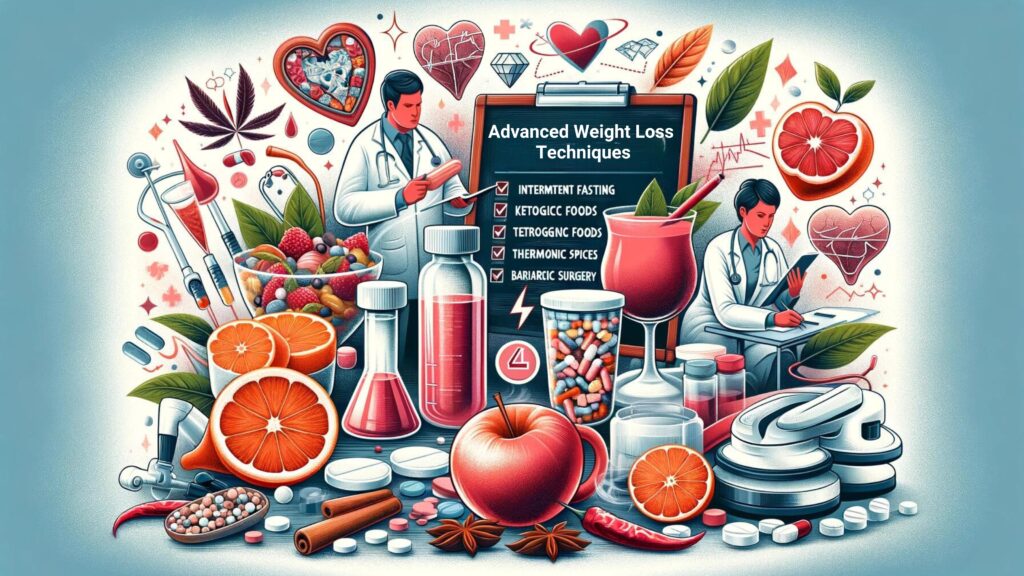
Advanced Weight Loss Techniques
Intermittent Fasting for Weight Loss: A Deep Dive
Intermittent fasting (IF) is a popular weight-loss technique that involves alternating periods of fasting and eating. This method is more than just skipping meals; it also involves strategic timing to encourage the body to burn fat for fuel, thereby increasing metabolic efficiency. When performed correctly, IF can lead to significant weight loss by improving hormonal balance and increasing basal metabolic rate. However, it is critical to approach IF with a strategy that includes eating nutritious foods during meals and avoiding overeating.
A Synergistic Relationship between a Ketogenic Diet and Weight Loss
The ketogenic diet, also known as keto, involves drastically reducing carbohydrate intake and replacing it with fat, causing the body to enter ketosis. In ketosis, the body becomes extremely efficient at burning fat for energy while also converting fat into ketones in the liver, which can supply energy to the brain. This diet not only reduces insulin and blood sugar levels, but it also suppresses appetite, allowing users to maintain the calorie deficit required for weight loss.
Do detox and cleansing help with weight loss?
Detoxes and cleanses are frequently marketed for their quick weight-loss benefits, but the results may not be long-lasting. These regimens typically start with a period of fasting, then include a strict diet of fruits, vegetables, juices, and water. While they can cause temporary weight loss, primarily water loss, they are not a sustainable method and do not promote healthy, long-term eating habits.
“The Science of Thermogenic Foods and Weight Loss”
Thermogenic foods raise body temperature, which boosts metabolism and increases calorie burn. For instance, the presence of capsaicin in chili peppers has demonstrated its ability to stimulate thermogenesis. Similarly, green tea and coffee may boost your metabolic rate due to their phytochemical properties. Incorporating these foods into your balanced diet can help increase your overall energy expenditure.
Use weight-loss supplements safely.
Weight-loss supplements may appear to be a quick fix, but proper use is essential. Many supplements contain active ingredients that can boost metabolism and reduce appetite, but they also carry risks such as increased heart rate and interactions with other drugs. Before starting any supplement, you should consult with your doctor, especially if you have any underlying health conditions.
Exploring Prescription Medication for Weight Loss
Prescription medications may be a viable option for some when lifestyle changes fail to produce results. These medications typically suppress appetite or reduce fat absorption, but they must be used under the supervision of a healthcare professional. People with serious weight-related health problems typically receive prescriptions for these medications, which do not replace diet or exercise.
Bariatric Surgery: When Weight Loss Seems Impossible
Bariatric surgery is considered when other weight-loss methods have failed and the individual faces serious health risks due to obesity. This type of surgery reduces the amount of food that the stomach can hold, decreases calorie absorption, or both. Although it can lead to significant weight loss, it also necessitates permanent lifestyle changes and carries potential risks and complications.
The role of probiotics in weight loss
Recent research suggests that probiotics may aid in weight loss by improving gut health. These beneficial bacteria can improve digestion, boost immunity, and possibly help regulate body weight due to their effects on the gut microbiome. While incorporating probiotic-rich foods like yogurt, kefir, and sauerkraut into your diet or taking a probiotic supplement may aid in weight loss, further research is necessary to fully comprehend their effectiveness.

Changes in behavior and lifestyle are crucial for weight loss
How Sleep Affects Weight Loss
Despite its critical importance for successful weight loss, many often overlook it. Sleep deprivation can cause hormonal imbalances, particularly those related to hunger (ghrelin) and satiety (leptin), resulting in increased appetite and calorie intake. Aim for 7-9 hours of quality sleep per night to improve metabolic health and weight loss efforts. Establish a relaxing bedtime routine and create a sleep-promoting environment by reducing noise and light.
Stress management techniques for weight loss
Chronic stress can slow weight loss by causing the release of cortisol, a hormone that promotes fat storage, particularly in the abdomen. Stress-reduction techniques like yoga, meditation, and deep breathing exercises can help mitigate these effects. Furthermore, regular physical activity not only reduces stress but also promotes weight loss, resulting in a positive cycle of health improvement.
Weight loss and relationship dynamics
Weight loss can have a significant impact on one’s relationships. It’s critical to communicate openly with partners, family, and friends about your goals and the changes you’re making. This openness can help you gain support from your close relationships, which is essential for long-term weight management. Encourage shared activities that promote a healthy lifestyle, which will benefit both your weight-loss journey and your relationships.
Setting realistic weight-loss goals
Setting realistic goals is critical to the success of any weight-loss program. Rather than aiming for an ideal weight, set attainable goals, such as increasing overall fitness or incorporating more nutritious foods into your diet. This approach promotes motivation and avoids the discouragement that often comes with unmet expectations. Use the SMART criteria (specific, measurable, achievable, relevant, and time-bound) to guide your goal-setting process.
Maintaining Motivation During Your Weight Loss Journey
Keeping motivated during a weight-loss journey necessitates consistent reinforcement of your goals. Regularly remind yourself of the reasons for your weight loss and acknowledge small victories along the way. Visual reminders, such as a motivational quote on your mirror or a progress chart, can provide daily encouragement. Furthermore, remaining adaptable and adjusting your goals as needed can help keep the journey interesting and engaging.
The significance of mindfulness in weight loss is crucial.
Mindfulness can improve your relationship with food and help you lose weight. Mindful eating entails paying close attention to the flavor, texture, and aroma of your food, as well as recognizing any hunger or fullness cues. This practice helps reduce overeating and makes meals more satisfying. Furthermore, mindfulness can reduce stress-related eating by increasing awareness of emotional rather than physical hunger.
Creating a Weight-Loss Support System
A strong support system can significantly boost your weight-loss efforts. Join online communities or local support groups where members share common goals and challenges. These networks offer encouragement, strategies, and accountability, which can be crucial during difficult times. Think about collaborating with experts, such as dietitians or personal trainers, who can provide specialized guidance specific to your needs.
Rewarding Yourself Without Undermining Weight Loss
The development of a non-food reward system is critical for long-term weight loss. Consider rewards that reflect your dedication to a healthier lifestyle, such as a new workout outfit, a massage, or a movie night. These rewards not only reinforce positive behavior, but they also improve your overall well-being without slowing down your progress.
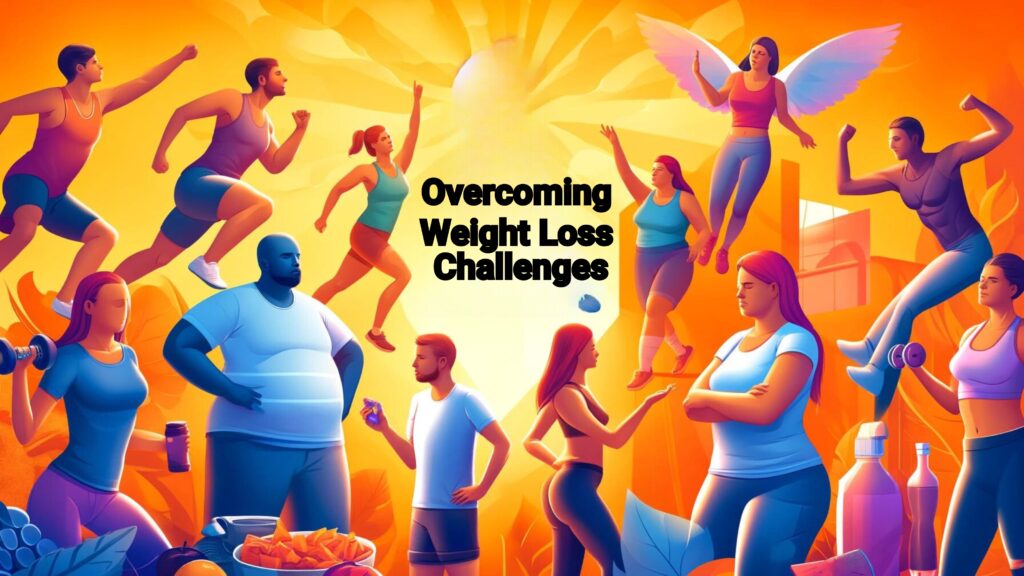
Overcoming weight loss challenges
Identifying and Overcoming Weight Loss Plateaus
Weight loss plateaus, a common and frustrating challenge, occur when progress unexpectedly stops despite adhering to a diet and exercise regimen. To overcome this, reassess your calorie intake and physical activity levels; small adjustments may be required as your body adapts. Furthermore, adding new exercises or increasing the intensity of existing workouts can rev up your metabolism and restart weight loss.
Managing Weight Loss Setbacks and Relapses
Setbacks in weight loss are unavoidable, but how you handle them will determine your long-term success. Instead of viewing relapses as failures, consider them learning opportunities. Analyze what caused the setback and devise future coping strategies. Maintaining a positive mindset and resilience is critical; remember that progress is not always linear, and perseverance is essential.
Dealing with Unsolicited Weight Loss Advice
Navigating unsolicited weight-loss advice is often an unpleasant part of the process. It is critical to remain confident in your chosen methods and politely decline suggestions that do not fit with your plans. If necessary, prepare a series of well-thought-out responses to educate others about your approach, reinforcing your dedication to your own health decisions.
Managing weight loss in social settings
Social events can pose a challenge for individuals on a weight loss journey, as they often serve foods that are not permissible on a diet. To avoid overeating in these situations, eat a healthy snack ahead of time. Alternatively, offer to bring a dish that is suitable for your diet, ensuring there is a healthy option available. Being open with friends about your weight loss goals can help you gain their support and understanding.
Weight loss due to certain health conditions
Weight loss when managing specific health conditions, such as diabetes or heart disease, necessitates customized approaches to ensure safety and efficacy. It is critical to consult with healthcare providers before developing a personalized diet and exercise plan. This ensures that your weight-loss efforts are appropriate for your health needs and can help you manage your condition.
Weight loss strategies for busy people
Those with hectic schedules may struggle to find time for weight-loss activities. Incorporate activity into your daily routine, such as walking during lunch breaks or performing short, high-intensity workouts at home. Preparing meals ahead of time can also help you maintain a healthy diet while living a busy lifestyle.
Age-Related Weight Loss Tips
As the body ages, its metabolism slows, making weight loss more difficult. Older adults should prioritize muscle mass preservation through resistance training and protein-rich diets. Furthermore, because the body’s energy requirements change with age, it is critical to adjust caloric intake and prioritize nutrient-dense foods for effective weight management.
Weight Loss Maintenance: Keeping the Weight Off
Maintaining weight loss can be more challenging than losing weight in the first place. To keep the weight off, stick to a healthy eating plan and regular physical activity. Regularly tracking your weight, being mindful of your eating habits, and setting new fitness goals can help you stay motivated. Developing a lifestyle that prioritizes healthy choices guarantees the integration of weight management into your everyday routine.
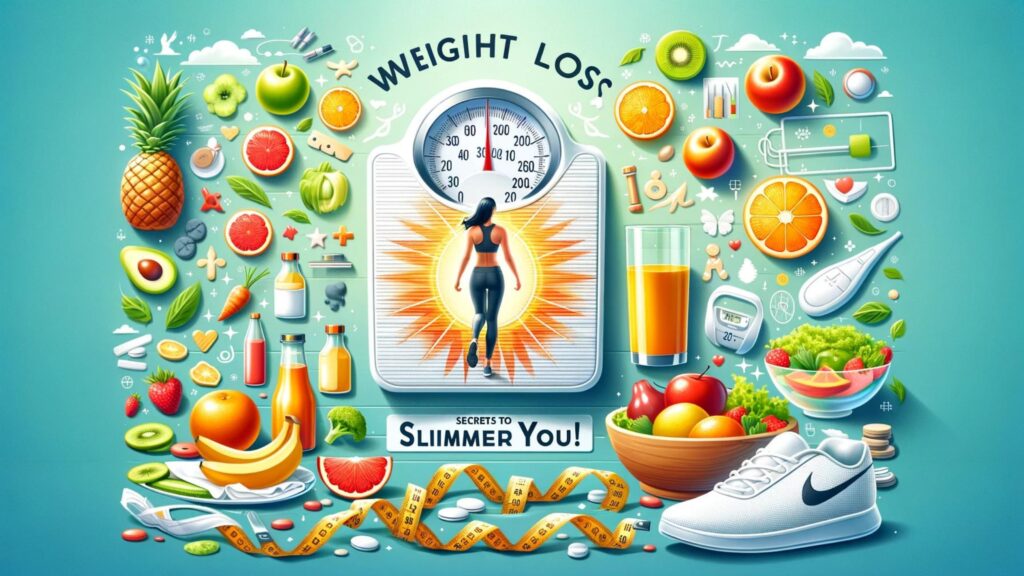
The ultimate weight loss guide: secrets for a slimmer you!
Starting a weight-loss journey can be daunting, but with the right guidance, it is entirely possible. This step-by-step guide will walk you through the necessary steps to lose weight and adopt a healthier lifestyle. We aim to build on each step to create a comprehensive approach to weight loss.
Step 1: Set realistic goals.
Clarification: Determine what success looks like for you. It’s more than just a number on a scale; consider how you want to feel, how your clothes will fit, and health indicators such as cholesterol or blood pressure.
If your ultimate goal is to lose 30 pounds, divide it into smaller, more manageable chunks of 5–10 pounds each.
Step 2: Determine Your Dietary Needs
Clarification: Determine your daily calorie requirements to maintain your current weight, then create a calorie deficit to lose pounds safely.
For example, use an online calculator to calculate your Total Daily Energy Expenditure (TDEE), then subtract 500 calories to achieve safe weight loss.
Step 3: Plan your meals.
Clarification: Planning prevents impulsive eating and keeps you within your calorie limits.
Create a weekly meal plan that includes nutrient-dense, low-calorie foods like vegetables, lean proteins, and whole grains.
Step 4: Incorporate Physical Activity
Clarification: Exercise is an important component of weight loss because it burns calories and builds muscle.
Example: Aim for at least 150 minutes of moderate aerobic activity or 75 minutes of vigorous activity per week, in addition to two days of strength training.
Step 5: Track Your Progress
Clarification: Keeping a food and exercise diary can help you stay on track and make adjustments as needed.
Use a mobile app or a physical journal to track every meal, snack, and workout.
Step 6: Stay hydrated.
Clarification: Water is essential for metabolism and helps to suppress appetite.
Drink at least 64 ounces (about 8 glasses) of water per day, and more if you are physically active or live in a hot climate.
Step 7: Manage stress
Clarification: High stress levels can lead to overeating and weight gain, so it’s critical to find ways to relax.
Incorporate stress-reduction techniques like yoga, meditation, and deep breathing into your daily routine.
Step 8: Seek Support
Clarification: Having a support system can greatly improve your chances of success.
Joining a weight-loss group, finding a workout buddy, or sharing your goals with friends and family can all help you stay accountable.
Step 9: Adjust as needed.
Weight loss is not linear. Prepare to reassess and adjust your plan as your body changes and plateaus form.
If you stop losing weight, you may need to increase your physical activity or reduce your calorie intake.
Step 10: Celebrate Your Successes
Clarification: Recognizing your achievements helps you stay motivated.
Reward yourself with non-food treats, such as a massage or a new book, for each milestone you achieve.
Taking these steps can make weight loss a positive and successful experience. Remember, the journey to a slimmer you is about more than just losing weight; it’s also about gaining health, energy, and confidence.
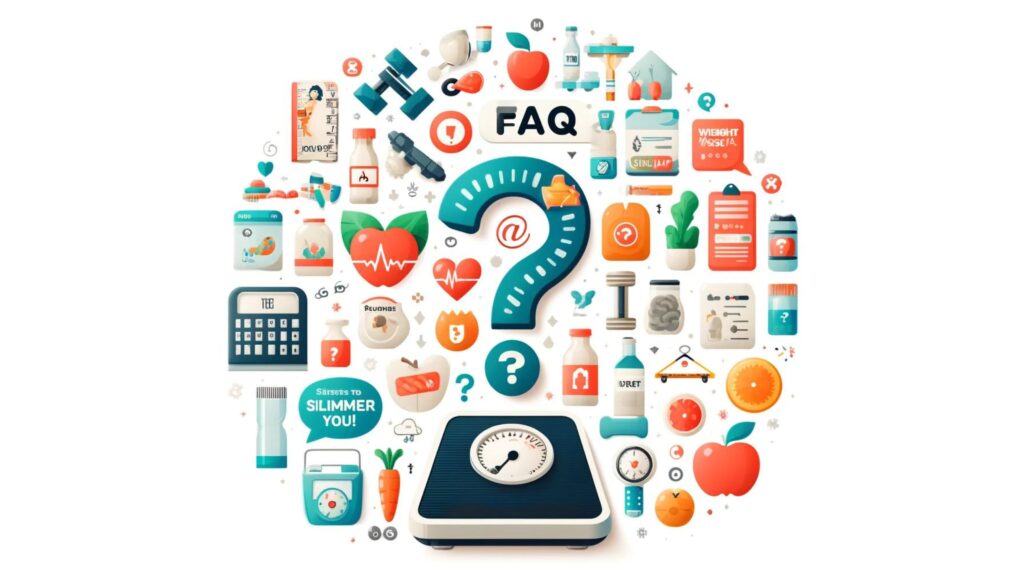
FAQs: The Ultimate Weight Loss Guide: Secrets for a Slimmer You!
1. What is the best way to start losing weight?
The most effective way to start your weight-loss journey is to set specific, attainable goals and combine dietary changes with increased physical activity. Begin by reducing your calorie intake and focusing on a diet rich in vegetables, fruits, lean proteins, and whole grains. To ensure consistency, incorporate regular exercises that you enjoy.
2. What number of calories should I consume to lose weight?
Your age, gender, current weight, activity level, and metabolic health all influence how many calories you should consume to lose weight. Generally, a calorie deficit of 500–1000 calories per day can result in a safe weight loss of 1-2 pounds per week. To get a more personalized estimate, use an online calorie calculator.
3. Can I lose weight without exercising?
Yes, dietary changes that create a calorie deficit alone can lead to weight loss. However, combining diet and exercise can lead to healthier, more long-term weight loss, improved muscle tone, and improved overall health.
4. Which exercises are best for weight loss?
The best weight-loss exercises combine cardiovascular and strength training. Cardio exercises like running, walking, cycling, and swimming burn calories and improve heart health, whereas strength training like weight lifting or bodyweight exercises builds muscle mass, which can raise your resting metabolic rate.
5. How can I stay motivated on my weight-loss journey?
Staying motivated can be difficult, but setting attainable goals, celebrating your accomplishments, and maintaining a positive attitude are essential. Joining support groups or collaborating with a friend who has been through a similar experience can also provide the motivation you need to keep going.
6. What do I do if I reach a weight-loss plateau?
If you reach a plateau, consider changing up your routine. Change your diet slightly, increase the intensity or type of exercise you do, or even take a few days off to recover. Sometimes, simply changing one small aspect of your routine can jumpstart your progress.
7. Is it necessary to count calories?
While counting calories can help you understand portion sizes and maintain a calorie deficit, it isn’t necessary for everyone. Focusing on the quality of your food and paying attention to your body’s hunger cues can also help you lose weight.
Conclusion
Weight loss is a process that requires perseverance and knowledge. “The Ultimate Weight Loss Guide: Secrets to a Slimmer You!” provides invaluable insights, allowing you to take control of your health and embark on a transformative journey with confidence and clarity.
Learn more about transforming your lifestyle in our related weight loss articles!



